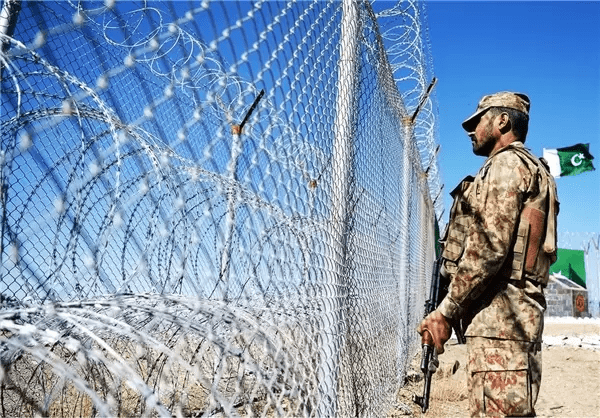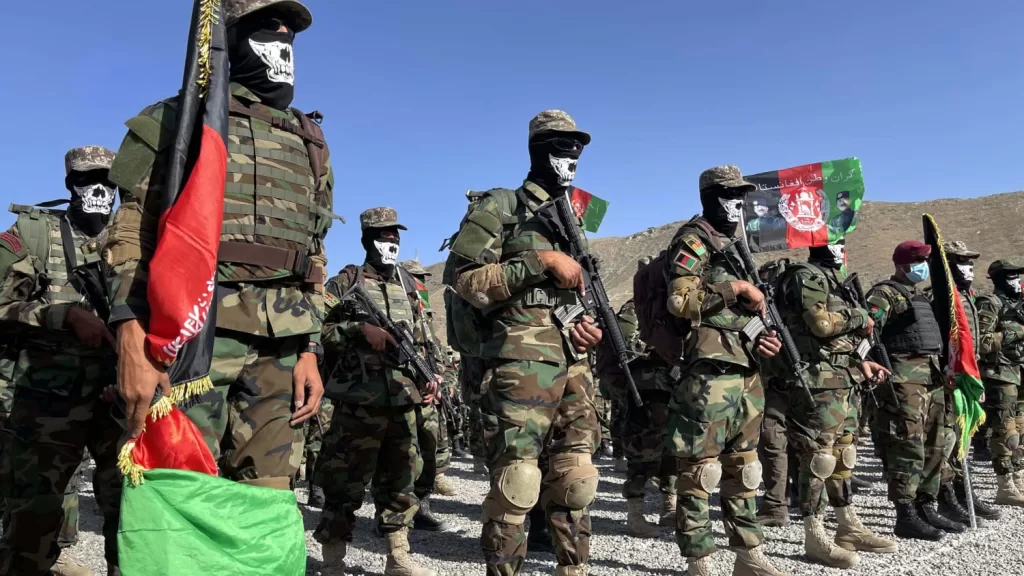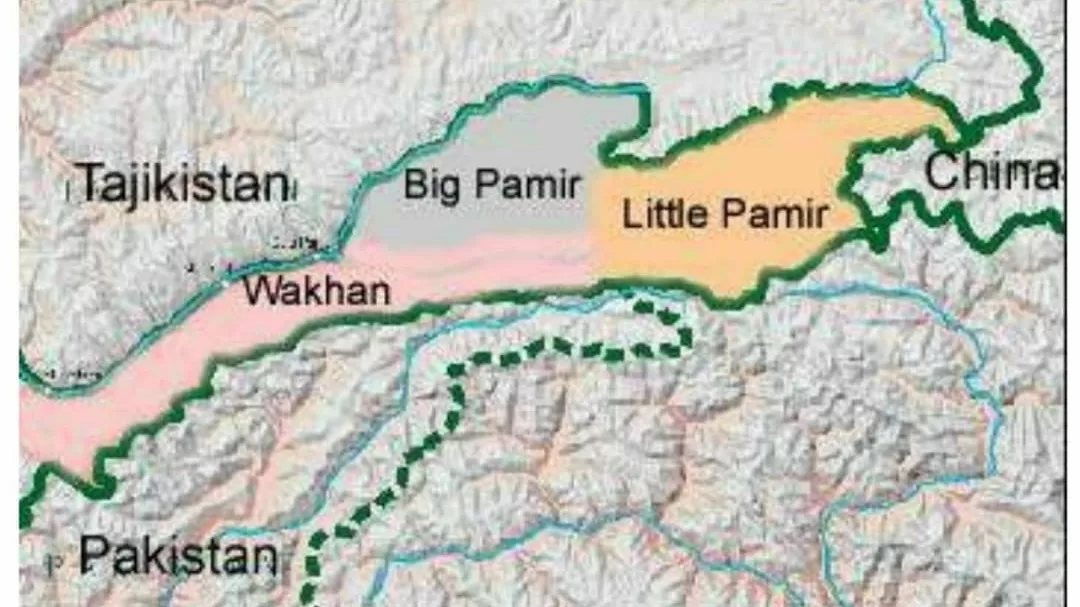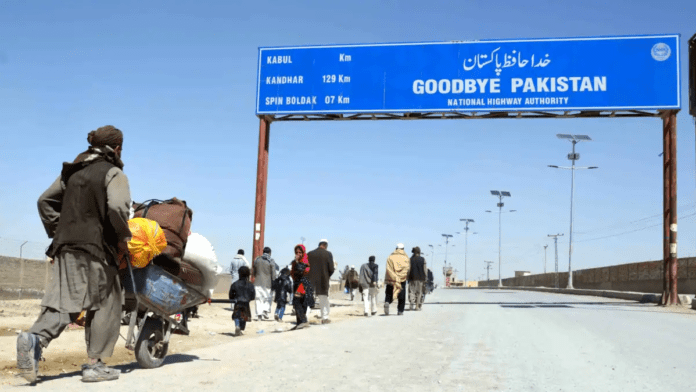The border between Pakistan and Afghanistan is sensitive in nature for a variety of reasons and for different sects of people across the border. Looking deeper, when late and recent ancient history is reviewed, we find different power poles crossing the Hindukush mountains and invading the subcontinent and this continued throughout the course of regional history. Since the majority of invaders came from Central Asia and from Afghanistan, the myth is that the Afghanistan boundaries up to the Indus River. The Pashtun nation is the common factor between the two countries and in fact Pakistani Pashtuns are more in numbers than Pashtuns living in Afghanistan.
The Pak-Afghan border is divided by the famous Durand Line agreement that was established after the 1893 agreement between Sir Henry Mortimer Durand of colonial British India and Ameer Abdur-Rahman Khan of Afghanistan for fixing the limit of their respective spheres of influence. The single-page agreement, which contained seven short articles, was signed by Mr. Durand and Ameer Abdur-Rahman Khan, agreeing not to exercise political interference beyond the frontier line between Afghanistan and what was then the British Indian Empire. Shortly after the demarcation of the Durand Line, the British began connecting the region on its side of Durand line to the vast and expansive railway network. Concurrently, the Afridi tribesmen began to rise up in arms against the British, creating a zone of instability between Peshawar and the Durand Line. As a result, travel across the boundary was almost entirely halted. By the time of the sub-continent independence movement, prominent Pashtun nationalists such as Abdul Ghaffar Khan advocated unity with the nearly formed Dominion of India, and not a united Afghanistan. By the time of Pakistan’s independence movement, popular opinion among Pashtuns was split amongst the majority who wished to join Pakistan.
Adding a few words to the historical perspective under which this treaty was signed will be important for readers. In 1839, during the First Anglo-Afghan War, British-led Indian forces invaded Afghanistan and initiated a war with the Afghan rulers. Two years later, in 1842, the British were defeated and ended the war. The British again invaded Afghanistan in 1878, during the Second Anglo-Afghan War. The British were successful in installing an Amir – Abdur Rahman Khan and the Treaty of Gandamak was signed in 1880. Afghanistan ceded control of various frontier areas to the British Empire and in addition to having attained all of their geopolitical objectives the British withdrew. In 1893, Mortimer Durand was dispatched to Kabul by the government of British India to sign an agreement with Amir Abdur Rahman Khan for fixing the limits of their respective spheres of influence as well as improving diplomatic relations and trade. On 12 November 1893, the Durand Line Agreement was reached. The two parties later camped at Parachinar, which was part of the then- Federally Administered Tribal Areas (FATA) of Pakistan, to delineate the frontier.

From the British side, the camp was attended by Mortimer Durand and Sahibzada Abdul Qayyum, Political Agent Khyber Agency representing the British Viceroy and Governor General. The Afghan side was represented by Sahibzada Abdul Latif and a former governor of Khost Province in Afghanistan, Sardar Shireendil Khan, representing Amir Abdur Rahman Khan. The original 1893 Durand Line Agreement was written in English, with translated copies in Dari language. The resulting agreement or treaty led to the creation of a new province called the North-West Frontier Province, now known as Khyber Pakhtunkhwa, a province of Pakistan which included FATA and the Frontier Regions. This treaty also led to Afghanistan receiving Nuristan and Wakhan corridor that separates Pakistan from Tajikistan.
Pakistan inherited the Durand Line agreement after its independence in 1947 but there has never been a formal agreement or ratification between Islamabad and Kabul. The Afghan government has not formally accepted the Durand Line as the international border between the two states, claiming that the Durand Line Agreement has been void in the past. This complicated issue is very sensitive to both the countries. The Afghan government worries that if it ever ratifies the agreement, it will permanently divide the 50 million Pashtuns and thus create a backlash in Afghanistan. Pakistan feels that the border issue had been resolved before its birth in 1947. This complicated border has always served as the main trade route between Afghanistan and South Asia, especially for supplies into Afghanistan. Shortly after Pakistan gained independence in 1947, Afghanistan crafted a two-fold strategy to destabilize the frontier regions of Pakistan, in an attempt to take advantage of Pakistan’s post-independence instability. It strongly aligned itself with Pakistan’s rival, India, and the USSR, which later invaded Afghanistan in 1979.
Timeline of Events of Pak – Afghan complicated Relations
After Pakistan gained independence in 1947, Afghanistan was the only county that refused to recognize Pakistan. Afghanistan eventually recognized Pakistan in 1950 three years after its Independence. In 1947 Afghanistan didn’t recognize and laid claims to 60% of Pakistan’s land, including Khyber Pakhtunkhwa, Balochistan, Punjab, Sindh, Federally Administered Tribal Areas (FATA) and Gilgit Baltistan. Afghanistan was the first county to use proxies against/inside Pakistan.
In 1949 they started supporting the Pashtun Nationalist Movement like Khudai Khidmatgar (Red Shirt) and Pashtun National Awami Party. In the same year Afghanis started their alliance with Mirzaali Khan, A member of Mehsud tribe. Mirzaali Khan’s group carried out attacks against Pakistani forces, aiming to create an independent Pashtunistan or merge with Afghanistan.
In 1950-51, Afghan Forces regularly shelled villages in Balochistan’s Chagai district, causing civilian casualties. This was part of a broader campaign to pressure Pakistan to recognize Pashtunistan and support Baloch separatism.
In May 1951, Afghan Forces attacked Dobandi village in Pakistan’s Chagai district, killing and injuring civilians. They also captured a key railway line connecting Quetta to Zahedan (Iran), disrupting Pakistan’s transportation network.
On October 16, 1951 a 25 year old Afghan national Said Akbar Khan assassinated Pakistan’s Prime Minister Liaquat Ali Khan during a public meeting. He believed that Liaquat Ali Khan was opposed to the creation of an independent Pashtunistan and had ordered military operations against afghan proxies.
On February 29, 1955, Afghan mobs attacked the Pakistani diplomatic missions in Kabul and Jalalabad, burning down the Pakistani flag and damaging Consulate property. It marked a low point in relations, leading to a significant deterioration in Diplomatic ties.

In September 1961 Afghanistan officially attacked Pakistan. Afghan soldiers, backed by Artillery and Air support, crossed the border and attacked Pakistani positions in Bajaur Agency because Afghanistan claimed sovereignty over Bajaur and wanted to annex the region.
After the Afghan Attack, Pakistan Army responded quickly, engaging Afghan forces in intense battles. Pakistan successfully repelled this attack, inflicting heavy casualties and an unconditional surrender by Afghanistan.
In 1970s a full-scale propaganda about Pashtunistan was launched by Afghanistan under the leadership of King Zahir Shah. By promoting Pashtunistan, they wanted to challenge Pakistan’s territorial integrity, creating instability, and advance Afghan regional interests.
In 1974, Afghan leader Mohammad Daoud Khan declined to attend the Organization of Islamic Conference (OIC) summit in Lahore, Pakistan. By not attending the summit, he aimed to emphasize Pashtunistan, and demonstrate his government’s commitment to territorial claims.
In 1975, Afghan and Soviet intelligence agencies, including K.H.A.D (Khadamat-e Aetela’at-e Dawlati) planned a series of attacks and subversive activities in Pakistan. However, Pakistan’s intelligence agencies, discovered these plans and took countermeasures to thwart them.
In the 1970s, Afghanistan trained Baloch in guerrilla warfare to fuel the separatist sentiments in Pakistan’s Balochistan region. The training aimed to weaken Pakistan’s control, create regional instability, and advance Soviet interests by spreading communist ideology.
On February 8, 1975, Hayat Sherpao, a Pakistani politician and leader of the Pakistan People’s Party (PPP) was killed in a bomb blast in Peshawar, Pakistan. The attack was carried out by Afghan-trained militants (NAP) backed by the Afghan government and the Soviet Union.
In 1979, Nur Muhammad Tarkai, became the President of Afghanistan and pledged to free the “Holy Land of Greater Afghanistan”. This referred to his ambition to reunify the Pashtun-dominated areas of Pakistan with Afghanistan, which he believed was their rightful territory.
In 1980, the Soviet Union invaded Afghanistan and Pakistan strongly opposed this invasion under General Zia-ul-Haq’s leadership. The conflict drew international attention, with the United States, China, and others supporting Pakistan’s stance against the Soviet Union. After Soviet invasion millions of Afghan refugees fled to Pakistan, creating a strain on it’s resources. Border clashes were normal during these times. This marked the beginning of a long and complex period of conflict and tension between Pakistan, Afghanistan and the Soviet Union.
During that time Pakistan Air Force (PAF) successfully thwarted attempts by Afghan and Soviet air forces to bomb Afghan refugee camps inside Pakistan through a Multi-Faceted approach, by deploying surface-to-air missiles, anti-aircraft guns, and fighter jets.
In the 1980s the level of escalation was so high that the PAF used to provide escorts to civil aircrafts flying in NWFP. This effective responses saved many lives and safeguarded Pakistan’s sovereignty, showcasing again PAF’s capabilities and commitment to defending its territory and people.
In 1989, During the Soviet withdrawal from Afghanistan, Najibullah’s government fired SCUD Missiles targeting major Pakistani cities, including Islamabad, Peshawar and Quetta. That is what Pakistan received after giving shelter to more than 7 million Afghan refugees.
In the 1990s, Civil War broke out between 2 Afghan factions i.e. the Taliban South and Northern Alliance. During this time Pakistan accepted new influx of Afghan refugees while the presence of extremist elements, including Gulbuddin Hekmatyar’s “Hizb-e-Islami” a threat to Pakistan.
In 2001 after the U.S invasion, Pakistan faced a multitude of challenges. The country experienced a surge in militant activities as Taliban and Al-Qaeda fighters fled Afghanistan and took refuge in Pakistan’s tribal areas, leading to Talibanization and sectarian violence.
The Afghan Taliban Joined the Tehreek-e-Taliban Pakistan (TTP), a terrorist group and targeted Pakistan’s military and civilians, including checkpoints, schools, and hospitals. This group also claimed responsibility for some high-profile attacks, including the horrendous 2014 Army Public School Peshawar massacre of school children.
It is important to know that TTP’s leadership, including Baitullah Mehsud and later Hakimullah Mehsud, had close ties with the Afghan Taliban and received support from them and have used their sanctuaries in Afghanistan to launch cross-border attacks in Pakistan.

After the U.S withdrawal from Afghanistan the Tehreek-e-Taliban Afghanistan (TTA) took control of Afghanistan and recent U.N. reports suggest that the TTA is supporting the TTP. They are providing shelter to 6000-6500 terrorists in Afghanistan and TTP Chief Khawarij Noor Wali Mehsud receives $50,500/month from the Afghan Taliban.
Regardless of the so-called claims by the Afghan side, the Durand Line is the official recognized border between Pakistan and Afghanistan (a 2,670-kilometre international land border between the two countries where the western end runs to the border with Iran and the eastern end to the border with China). Few other questionable areas were settled during this treaty for example Nuristan and Wakhan corridor annexed to Afghanistan because of this Parachinar agreement.
Pashtuns living in Pakistan are more pro-Pakistan than any other preferences. Their economic and religious affinity with Pakistan is without any boundaries that’s why they are called defenders of Pakistan on the western side. This is the reason that despite spreading propaganda about the Pashtunistan movement in the past and Pashtun Tahafuz movement (PTM) recently, didn’t receive any significant results and Pakistani Pashtuns remain intact with the sovereignty of Pakistan.
The border between Pakistan and Afghanistan is now being fenced with designated border crossing points for trade and travel which should eliminate any terror outfit crossing the border and hence peace, security and trade will be enhanced.
An advice to the Pakistan government will be to handle this border issue with utmost delicacy with the current Taliban regime (but after it gets international legitimacy). There is no rush to have the Durand Line recognized by Afghanistan, in fact, the Durand line is the international recognized border regardless. Rather, Pakistan can heavily facilitate the people to people travel via border points by decreasing long waiting time, elderly people get clearance on priority and extending the border crossings timings, etc.
The above-mentioned analysis in the context of Pakistan and Afghanistan relations is an unfortunate history and Pakistan is suffering from since its creation. But now the time has arrived finally to declare Afghanistan as a hostile land. We need to deal with this problem first before we address any other issue.
The misconceptions and utopia in which these Afghan regimes are living in are:
1. No one could hold on to Afghanistan as this is known as the ‘graveyard of Empires’ but in fact, they were ruled by many powers in the past. Their claim of the ‘graveyard’ is just due to Pakistan being at their backyard and they get all kind of support from Pakistan, moreover, millions of Afghans were allowed to enter and settle in Pakistan.

2. Afghans totally forget facts on ground that they are dealing with one of the mightiest militaries of the world that are equipped with an array of tactical equipment. This is their fatal utopia and will not go away until they get a big blow back from Pakistan as they tried in 1962. I wish and pray that sanity will prevail and these Afghans could come on the right path and if they do so they will get huge benefits. But history and current events are depicting a totally negative picture. The Afghan government is fully supporting the TTP terror outfits which we have named as ‘Fitna Al Khawarij’. Also, the Afghan government is behind the PTM movement, Pashtunistan movement and also hiding Baloch terrorists with all types of support structure. So in such a case, the Pakistan State has to take all possible measures to minimize this menace.
Due to huge involvement of Afghan refugees in smuggling, theft, robbery and other social evils, Pakistan has finally decided to fence the long Pak Afghan border and repatriate the refugees back to Afghanistan.
In view of the above and the troublesome border history with Afghanistan, it is highly recommended to reconsider the policy about Afghanistan that Pakistan has adopted so far, rather it should now be a more realistic and aggressive long-term policy. Afghanistan has actually proved to be more lethal than any other enemy. The time has now arrived for the Pakistan nation to view Afghanistan as an adversary and not a pro-Pakistan entity.
Wakhan’s future must be discussed and elaborated due to its proximity with Pakistan along with other Turkic origin areas of Northern Afghanistan in the context of Turan and its possible association with organization of Turkic states.





